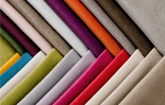BANGALORE, India, July 22, 2025 /PRNewswire/ -- Smart Textile Material Market is Segmented by Type (Passive Smart Textile Material, Active Smart Textile Material, Ultra-Smart Smart Textile Material), by Application (Fashion & Entertainment, Sports & Fitness, Medical, Transportation, Defense & Military, Architecture).
The Smart Textile Material Market was estimated to be worth USD 3594 Million in 2023 and is forecast to a readjusted size of USD 5598.5 Million by 2030 with a CAGR of 6.4% during the forecast period 2024-2030.
Claim Your Free Report: https://reports.valuates.com/request/sample/QYRE-Auto-11Y7780/Global_and_Japan_Smart_Textile_Material_Market
Major Factors Driving the Growth of Smart Textile Material Market:
The smart textile material market is evolving as a dynamic fusion of material science and digital innovation. With increasing demand across healthcare, defense, automotive, fashion, and industrial sectors, the market is experiencing diversified growth. Factors such as rising interest in wearable tech, eco-conscious consumerism, and smart infrastructure are redefining material performance expectations.
Textile manufacturers are focusing on durability, adaptability, and user-centric functionalities to remain competitive. Strategic partnerships, funding support, and technological breakthroughs are accelerating commercial adoption. As consumers and industries move toward intelligent, responsive environments, the smart textile material market stands as a critical pillar in the future of interactive material design and usage.
Unlock Insights: View Full Report Now! https://reports.valuates.com/market-reports/QYRE-Auto-11Y7780/global-and-japan-smart-textile-material
TRENDS INFLUENCING THE GROWTH OF THE SMART TEXTILE MATERIAL MARKET:
Ultra-smart textiles are significantly transforming the smart textile material market by integrating multiple functionalities such as sensing, actuating, and adapting to environmental stimuli. These textiles are designed to be highly interactive, incorporating advanced elements like shape-memory alloys, embedded nanomaterials, and responsive polymers that react to temperature, pressure, or movement. Their ability to function autonomously without constant external control has made them a crucial component in fields such as medical monitoring, sports gear, and safety wear. Increasing demand for intelligent clothing that supports biometric tracking and environmental responsiveness continues to elevate the prominence of ultra-smart materials. As industries push towards intelligent wearables, these textiles offer scalable solutions, thus stimulating R&D investments and accelerating their adoption across commercial and defense sectors.
Active smart textiles play a vital role in driving growth by offering real-time responsiveness and adaptability. These textiles can react to stimuli like temperature, humidity, light, or electric fields and modify their properties accordingly. Their appeal lies in applications like heating garments, moisture management clothing, and wearable displays. Industries such as sports, healthcare, and automotive are adopting these materials to enhance performance, comfort, and user interaction. For instance, active smart textiles are widely used in sportswear for body temperature regulation and sweat control. As consumers increasingly seek multifunctional and performance-enhancing apparel, active smart materials serve as an optimal solution. This rising demand encourages material innovations and deepens market penetration across various consumer and industrial verticals.
Defense and military sectors are major growth drivers for the smart textile material market due to their demand for durable, adaptive, and multifunctional clothing. Military-grade smart textiles are used to monitor soldiers' health, detect hazardous substances, and support communication systems. These textiles often embed sensors to provide real-time physiological data, environmental analysis, and location tracking. Moreover, materials that can change color or provide thermal camouflage are gaining prominence in military applications. With increasing global defense expenditures and technological advancements in combat-ready wearables, nations are investing in next-gen uniforms. This heightened focus on soldier safety, surveillance, and battlefield efficiency accelerates the adoption of high-performance smart textile materials in defense systems globally.
The booming fitness culture and rising interest in performance optimization are propelling smart textiles in sportswear. Smart garments embedded with stretchable electronics and conductive threads monitor motion, muscle fatigue, and hydration levels. Athletes and enthusiasts benefit from real-time feedback and analytics, which helps fine-tune their performance. The growing use of fitness trackers has opened the door for apparel that serves similar functions while offering enhanced comfort. Sports brands are capitalizing on this demand by partnering with tech firms to develop smart clothing lines. As health-conscious consumers increasingly seek intelligent wearables, the demand for durable and washable smart textile materials continues to surge.
Automotive manufacturers are incorporating smart textiles in seats, steering wheels, and headliners for enhanced safety and comfort. These materials enable seat occupancy detection, driver fatigue monitoring, and temperature regulation. Luxurious in-vehicle experiences are becoming a market differentiator, prompting OEMs to integrate responsive textiles. Additionally, e-mobility trends and autonomous vehicles are accelerating the demand for interiors that offer personalized interaction. With growing consumer expectations and advancements in material engineering, smart textiles are reshaping the automotive interior market, prompting consistent demand for specialized materials with embedded sensors and actuators that meet automotive-grade durability and design aesthetics.
Eco-conscious consumers and regulatory pressures are encouraging the use of biodegradable and recyclable smart textile materials. Manufacturers are exploring organic substrates, water-based inks, and low-impact production methods. There is a push toward reducing electronic waste by developing textiles that integrate washable electronics and extend product life cycles. Brands focusing on circular fashion find smart textiles compatible with their sustainability objectives. Environmental certifications and green labeling have also driven competition among textile producers to offer sustainable smart solutions. This trend is not only broadening the appeal of smart textiles but also pushing innovation in material science for biodegradable and energy-efficient options.
Customization and personalization are now key drivers of consumer behavior. Smart textiles enable adaptive clothing that responds to wearer preferences—changing color, adjusting ventilation, or integrating mobile controls. From temperature-sensitive coats to posture-correcting shirts, these textiles cater to lifestyle enhancement. Fashion-forward consumers, especially millennials and Gen Z, demand garments that blend tech with style. Brands that offer interactive, customizable wearables are gaining competitive advantage. As the line between fashion and function continues to blur, the demand for versatile smart textile materials that support personalized experiences is rapidly increasing, resulting in a diversified product pipeline from textile manufacturers.
Claim Yours Now! https://reports.valuates.com/api/directpaytoken?rcode=QYRE-Auto-11Y7780&lic=single-user
SMART TEXTILE MATERIAL MARKET SHARE:
Global Smart Textile key players include Textronics, Peratech, DuPont, Clothing+, etc. Global top four manufacturers hold a share over 15%.
North Americas is the largest market, with a share over 50%, followed by China, and Europe, both have a share over 35 percent.
In terms of product, Passive Smart Textile is the largest segment, with a share over 35%. And in terms of application, the largest application is Military Uses, followed by Civil Uses, Healthcare Uses, etc.
Key Companies:
- Textronics
- Milliken
- Toray Industries
- Peratech
- DuPont
- Clothing
- Outlast
- D3o lab
- Schoeller Textiles AG
- Texas Instruments
- Exo2
- Vista Medical Ltd.
- Ohmatex ApS
- Interactive Wear AG
Purchase Regional Report: https://reports.valuates.com/request/regional/QYRE-Auto-11Y7780/Global_and_Japan_Smart_Textile_Material_Market
SUBSCRIPTION
We have introduced a tailor-made subscription for our customers. Please leave a note in the Comment Section to know about our subscription plans.
DISCOVER MORE INSIGHTS: EXPLORE SIMILAR REPORTS!
- Medical Smart Textile Market was valued at USD 1038 Million in the year 2024 and is projected to reach a revised size of USD 4934 Million by 2031, growing at a CAGR of 25.3% during the forecast period.
- Smart Textile Market revenue was USD 3594 Million in 2022 and is forecast to a readjusted size of USD 12460 Million by 2029 with a CAGR of 19.2% during the forecast period (2023-2029).
- Smart Textile Automated Inspection Equipment Market was valued at USD 864 Million in the year 2024 and is projected to reach a revised size of USD 1631 Million by 2031, growing at a CAGR of 9.5% during the forecast period.
- Sensor-Based Smart Medical Textiles Market
- Garment Smart Management System Market was valued at USD 274 Million in the year 2023 and is projected to reach a revised size of USD 365 Million by 2030, growing at a CAGR of 4.2% during the forecast period.
- Smart Materials Market was valued at USD 4605 Million in the year 2024 and is projected to reach a revised size of USD 6616 Million by 2031, growing at a CAGR of 5.4% during the forecast period.
- High Tech Fabrics Market was valued at USD 746 Million in the year 2024 and is projected to reach a revised size of USD 1520 Million by 2031, growing at a CAGR of 10.9% during the forecast period.
- Water Repellant for Textile Market was valued at USD 843 Million in the year 2024 and is projected to reach a revised size of USD 1289 Million by 2031, growing at a CAGR of 6.4% during the forecast period.
- Antimicrobial Textiles Market was valued at USD 8728 Million in the year 2024 and is projected to reach a revised size of USD 11370 Million by 2031, growing at a CAGR of 3.9% during the forecast period.
- Smart Wardrobe Distribution Market
- Textile Auxiliaries Market was estimated to be worth USD 7086.7 Million in 2023 and is forecast to a readjusted size of USD 8949.6 Million by 2030 with a CAGR of 2.9% during the forecast period 2024-2030
DISCOVER OUR VISION: VISIT ABOUT US!
Valuates offers in-depth market insights into various industries. Our extensive report repository is constantly updated to meet your changing industry analysis needs.
Our team of market analysts can help you select the best report covering your industry. We understand your niche region-specific requirements and that's why we offer customization of reports. With our customization in place, you can request for any particular information from a report that meets your market analysis needs.
To achieve a consistent view of the market, data is gathered from various primary and secondary sources, at each step, data triangulation methodologies are applied to reduce deviance and find a consistent view of the market. Each sample we share contains a detailed research methodology employed to generate the report. Please also reach our sales team to get the complete list of our data sources.
GET A FREE QUOTE
Valuates Reports
sales@valuates.com
For U.S. Toll-Free Call 1-(315)-215-3225
WhatsApp: +91-9945648335
Website: https://reports.valuates.com
Blog: https://valuatestrends.blogspot.com/
Pinterest: https://in.pinterest.com/valuatesreports/
Twitter: https://twitter.com/valuatesreports
Facebook: https://www.facebook.com/valuatesreports/
YouTube: https://www.youtube.com/@valuatesreports6753
https://www.facebook.com/valuateskorean
https://www.facebook.com/valuatesspanish
https://www.facebook.com/valuatesjapanese
https://valuatesreportspanish.blogspot.com/
https://valuateskorean.blogspot.com/
https://valuatesgerman.blogspot.com/
https://valuatesreportjapanese.blogspot.com/
Logo: https://mma.prnewswire.com/media/1082232/Valuates_Reports_Logo.jpg




Share this article